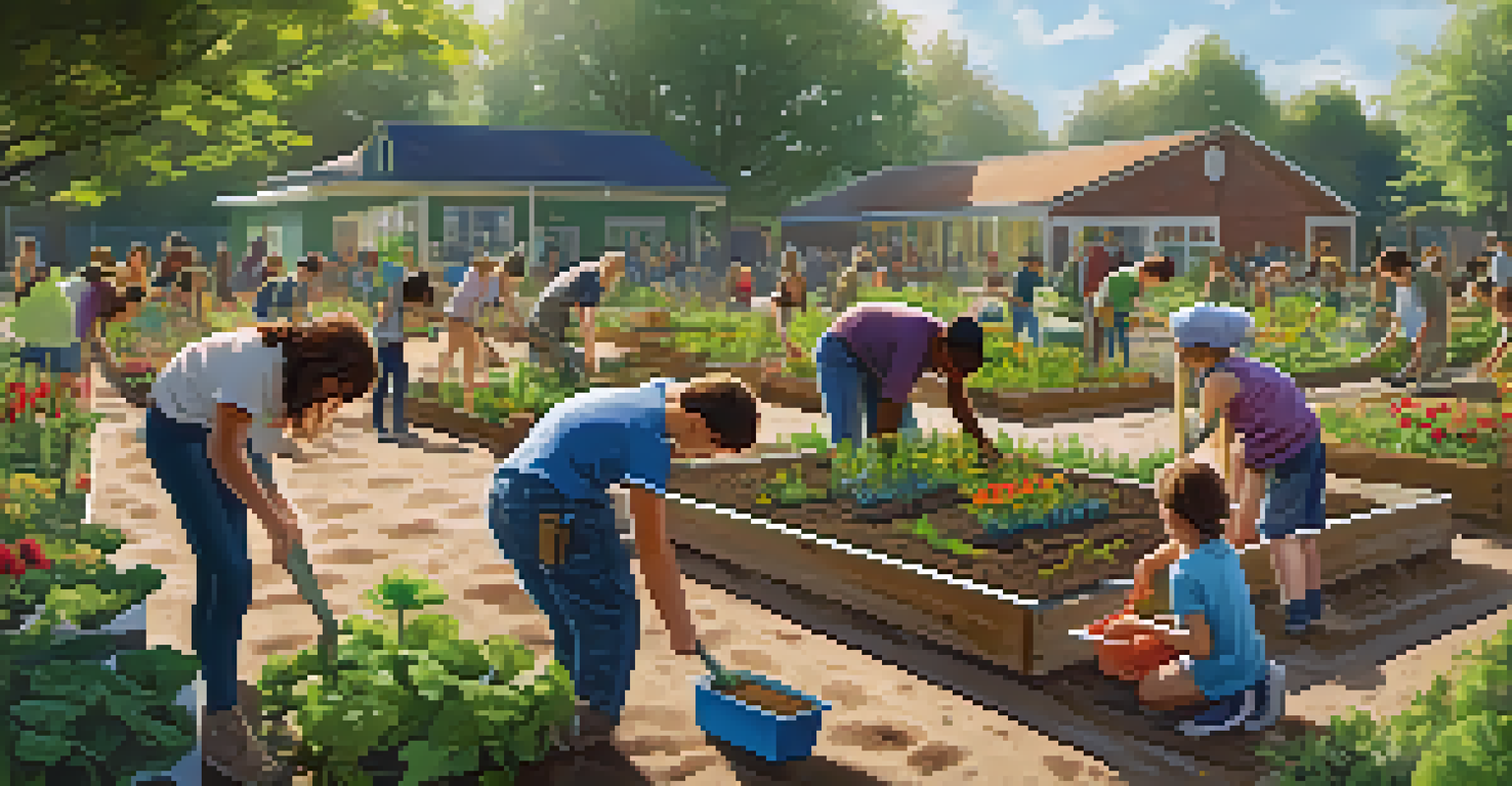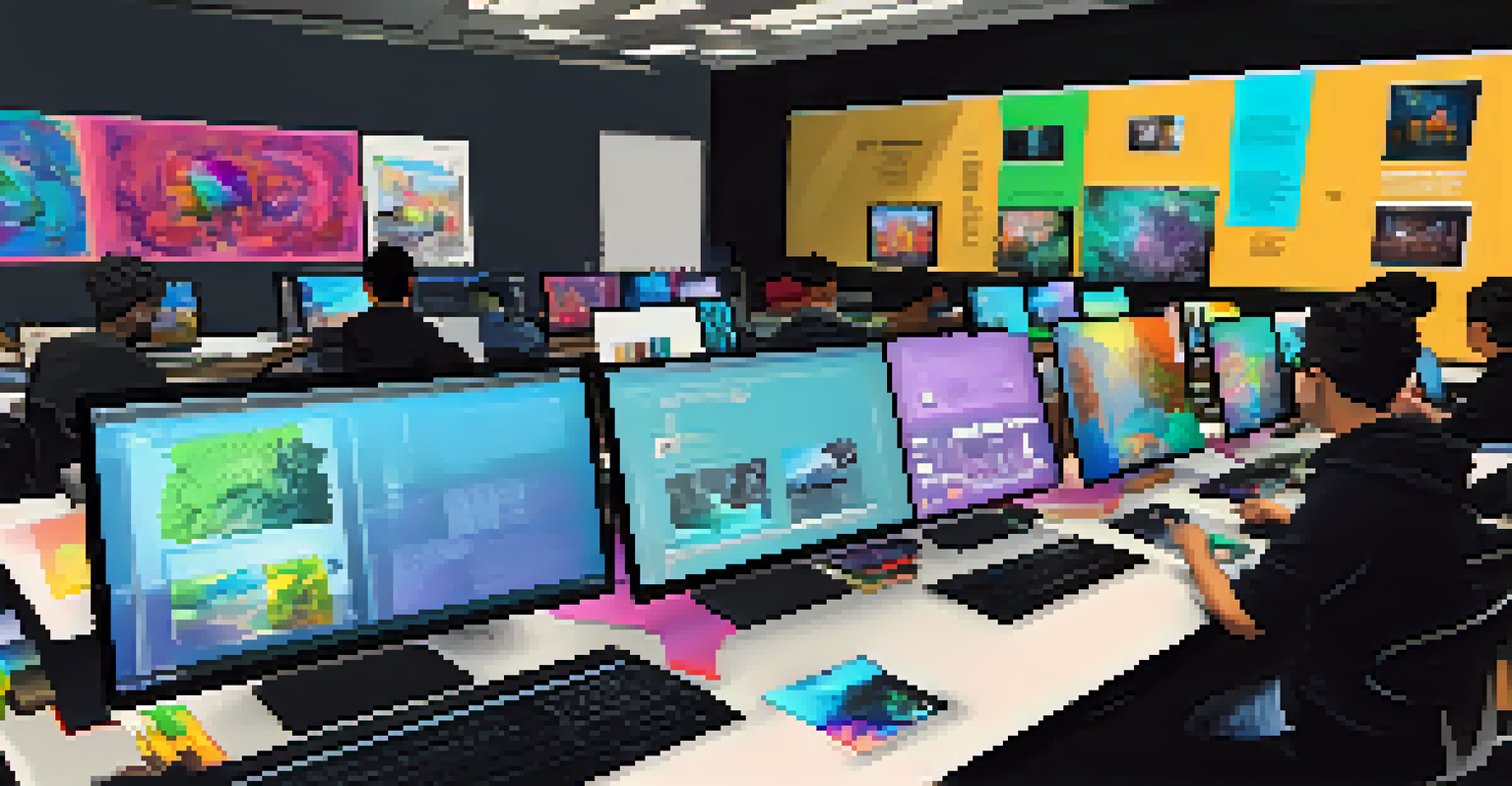STEAM and the Arts: Building a Creative Curriculum

Understanding the STEAM Framework in Education
STEAM stands for Science, Technology, Engineering, Arts, and Mathematics. This integrated approach encourages students to think critically and creatively across disciplines. By weaving the arts into the traditional STEM fields, educators can foster a more holistic learning environment.
Education is not the filling of a pail, but the lighting of a fire.
For instance, a lesson on architecture might involve both mathematical principles and artistic design. This blend not only makes learning more engaging but also helps students see the real-world connections between different subjects. Ultimately, STEAM nurtures well-rounded individuals equipped for the modern workforce.
As educational institutions increasingly adopt this model, it’s clear that incorporating arts can enhance student engagement. By appreciating the interconnectedness of disciplines, students can develop innovative solutions to complex problems.
The Role of Arts in Enhancing Critical Thinking
Arts education encourages students to analyze and interpret various forms of expression, which sharpens their critical thinking skills. When students engage in artistic activities, they learn to evaluate their work and make decisions based on feedback. This reflective process is invaluable in any field.

Consider a theater class where students must understand character motivations and plot development. This requires deep analytical skills, as they must think critically about the narrative and how to convey it through performance. Such experiences translate well into scientific inquiry or engineering projects, where evaluation and iteration are key.
STEAM Merges Art with Science
By integrating the arts with STEM subjects, the STEAM framework enhances critical thinking and creativity in students.
Furthermore, the arts teach flexibility and adaptability—qualities essential for problem-solving in any discipline. By fostering these skills, STEAM education prepares students not just to consume information but to actively participate in creating knowledge.
Cultivating Collaboration Through Artistic Projects
Collaborative projects in the arts provide a rich opportunity for students to work together towards a common goal. Whether it's creating a mural or developing a short film, these projects require teamwork, communication, and shared responsibility. Such collaboration mirrors the dynamics of real-world workplaces.
Creativity is intelligence having fun.
For example, a group of students might collaborate on a robotics project that also incorporates elements of visual storytelling. This not only enhances their technical skills but also their ability to articulate ideas and work as a cohesive unit. These experiences can lead to stronger interpersonal skills and greater emotional intelligence.
Ultimately, collaboration in the arts teaches students the importance of diverse perspectives. By learning to appreciate and integrate different viewpoints, they become more effective problem solvers and innovators.
Integrating Technology with Artistic Expression
In today’s digital age, the intersection of technology and the arts opens up endless possibilities for creative expression. From digital painting to music production software, technology allows students to explore their artistic talents in innovative ways. This blend not only enhances the learning experience but also prepares students for future careers.
For instance, students can create interactive installations that combine coding and visual art. This not only enhances their technical skills but also deepens their understanding of artistic concepts. Such projects encourage experimentation and risk-taking, essential components of creative thinking.
Collaboration Boosts Learning
Artistic projects promote teamwork and communication skills, preparing students for real-world collaboration.
Moreover, technology can provide access to a wealth of resources and inspiration. Online platforms allow students to share their work and receive feedback from a global audience, fostering a sense of community and collaboration beyond the classroom.
The Importance of Empathy in Creative Learning
Empathy is a vital skill nurtured through the arts. When engaging with artistic works, students learn to understand diverse perspectives and experiences, which enriches their emotional intelligence. This is particularly important in a world that values collaboration and inclusivity.
For example, when students participate in a community art project, they gain insight into the stories and struggles of others. This not only helps them to appreciate different cultures but also encourages them to become more compassionate individuals. Such experiences can lead to greater social awareness and responsibility.
Incorporating empathy into the STEAM curriculum helps students become not only better artists or scientists but also more thoughtful citizens. As they learn to appreciate diversity, they are better equipped to contribute positively to society.
Real-World Applications of a STEAM Curriculum
A STEAM curriculum has practical applications that extend beyond the classroom. By engaging in projects that solve real-world problems, students can see the tangible impact of their learning. For instance, creating a community garden can teach biology, environmental science, and design principles in a hands-on way.
Such projects not only reinforce academic concepts but also instill a sense of purpose and community engagement. Students learn that their skills can be used to address important issues, from sustainability to social justice. This connection to the world around them can be incredibly motivating.
Empathy Fuels Creative Growth
Engaging with the arts fosters empathy in students, helping them understand diverse perspectives and become responsible citizens.
Ultimately, real-world applications of STEAM education prepare students for future challenges. They learn to approach problems with creativity and innovation, essential skills in any career path they choose.
Challenges and Solutions in Implementing STEAM
While the benefits of a STEAM curriculum are clear, implementing it can come with challenges. Some educators may feel unprepared to teach art-related subjects or may lack the resources to integrate arts into their lesson plans. This can lead to a fragmented approach that fails to fully realize the potential of STEAM education.
However, professional development and collaboration among educators can help bridge this gap. Sharing resources, ideas, and strategies not only enhances confidence but also fosters a sense of community among teachers. Schools can also seek partnerships with local artists or organizations to enrich their programs.

By addressing these challenges head-on, educators can create a more cohesive STEAM curriculum. This collaboration ultimately benefits students, providing them with a richer, more engaging educational experience that prepares them for the complexities of the future.